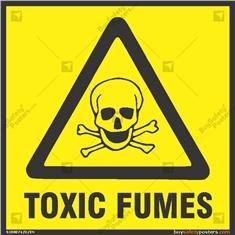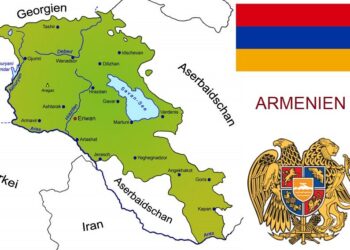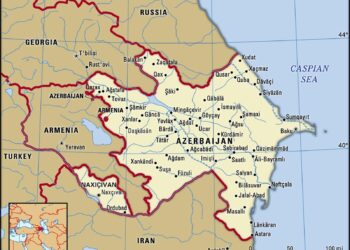YEREVAN – For decades, residents of Yerevan have endured the persistent threat posed by a hazardous dumpsite ominously nicknamed the city’s “toxic bomb.” Once a repository for noxious industrial waste and hazardous materials, the site has long jeopardized public health and the environment. Despite repeated promises from local authorities to remediate the area and implement strict regulations, progress remains elusive. This article delves into Yerevan’s protracted battle with the dumpsite, examining the environmental hazards, community activism, and the pattern of unfulfilled official commitments documented by OC Media.
Yerevan’s Toxic Bomb Dumpsite Exposes Years of Environmental Neglect
For over two decades, residents living near the infamous dumpsite on the outskirts of Yerevan have endured relentless exposure to hazardous chemicals and toxic fumes. Despite multiple reports highlighting the site’s environmental dangers – ranging from contaminated groundwater to air pollution – tangible government action remains conspicuously absent. Local communities continue to report health issues such as respiratory problems and skin conditions, linking these ailments directly to the noxious emissions emanating from the site. Meanwhile, decades of unregulated waste accumulation have turned the area into an ecological flashpoint, emblematic of deeper systemic failures in environmental oversight.
Promises to remediate the toxic legacy have been plentiful but largely unfulfilled, with a series of reviews and pledges failing to translate into effective cleanup strategies. Activists and experts emphasize the urgent need for comprehensive monitoring programs and transparent accountability mechanisms. Below is a summary of key environmental concerns and responses documented over recent years:
- Air quality degradation: Elevated levels of volatile organic compounds detected in nearby neighborhoods
- Water contamination: Toxic leachate infiltrating shallow aquifers spanning several kilometers
- Health statistics: Increased rates of respiratory and dermatological conditions reported in local clinics
- Government initiatives: Multiple failed projects and ongoing calls for international assistance
| Year | Reported Issue | Government Response |
|---|---|---|
| 2005 | Initial air pollution alarms | Ignored |
| 2012 | Leachate contamination confirmed | Monitoring promised |
| 2018 | Community health report released | Cleanup commission formed |
| 2023 | Renewed calls for cleanup | No concrete action |
Health Risks and Community Outrage Mount Amidst Government Inaction
The local population continues to bear the brunt of hazardous emissions rising from the deteriorating dumpsite on Yerevan’s outskirts, which experts have long described as a ticking environmental time bomb. Residents report persistent headaches, respiratory problems, and other health complications linked to the toxic fumes, yet official statements offer little reassurance or concrete action. The government’s failure to enforce basic environmental protections has amplified fears, leaving communities vulnerable and eroding public trust. Environmental groups warn that without urgent remediation, these health threats will escalate, disproportionately impacting children, the elderly, and those with pre-existing conditions.
Public anger has surged as promises of cleanup and relocation repeatedly fall flat, fueling protests and calls for transparency. Key concerns raised by activists include:
- Lack of timely government intervention despite mounting scientific evidence
- Insufficient monitoring of air quality in affected neighborhoods
- Absence of clear accountability mechanisms for environmental damage
| Reported Symptoms | Percentage of Affected Residents |
|---|---|
| Chronic Cough | 68% |
| Headaches | 54% |
| Respiratory Infections | 47% |
| Eye Irritations | 34% |
Experts Call for Immediate Cleanup and Transparent Waste Management Reforms
Environmental specialists and urban planners have issued urgent demands for a comprehensive and transparent overhaul of Yerevan’s waste disposal practices. The decades-old dumpsite, notorious for releasing hazardous gases into nearby neighbourhoods, has become a symbol of systemic neglect and mismanagement. Experts warn that without immediate, scientifically guided remediation efforts, the site’s contamination will exacerbate public health crises and further degrade local ecosystems. They emphasize that past promises of rehabilitation have repeatedly fallen short due to opaque operations and a lack of public accountability.
Key recommendations from the expert panel include:
- Implementation of real-time air and soil quality monitoring stations around the affected zones
- Mandatory disclosure of waste management contracts and expenditures to ensure financial transparency
- Community-inclusive planning processes to rebuild trust and gauge public health impacts accurately
- Investment in sustainable waste-to-energy technologies to reduce landfill reliance
| Action | Expected Timeline | Impact |
|---|---|---|
| Site Soil Decontamination | 6-12 months | Reduced toxic runoff |
| Air Quality Monitoring Installation | 3 months | Early hazard detection |
| Transparency Legislation Proposal | 1 month | Improved governance |
Final Thoughts
Yerevan’s enduring battle with the so-called “toxic bomb” dumpsite underscores the complex challenges of urban waste management and public health in post-Soviet cities. Despite years of community protests and numerous governmental promises, tangible progress remains elusive. As the city grapples with the hazardous legacy of its landfills, Yerevan’s experience serves as a stark reminder that addressing environmental dangers requires not only acknowledging the problem but also sustained political will and transparent action. Without these, the city’s most vulnerable residents will continue to bear the brunt of pollution’s invisible toll.
















